Abstract
Study Design
The study involved the development and accuracy testing of an intra-operative navigation system
Objectives
This study was undertaken to develop a navigation system using a robot armtype Three-dimensional digitizer. A nd, to apply the developed system to pedicle screw insertion, and to evaluate its accuracy.
Summary of Literature Review
To the best of our knowledge, no navigation system has been developed using a robot arm-type Three-dimensional digitizer.
Materials and Methods
We have developed a navigator using a Three-dimensional digitizer (Microscribe 3- D G2, Immersion, USA) supported by a personal computer. Four types of patient- to- image registration techniques were implemented. During navigation, the central axis of the robot arm's stylus and arm extension can be displayed over multiplanar and Three-dimensional images, which are reconstructed from axial CT scan images. Registration errors and target localization errors of the navigation system were evaluated using a phantom made from a plastic lumbosacral bone model. The accuracy of pedicle screw insertion was also evaluated by placing 18 pedicle screws in such bone models.
Results
The registration error was 0.78± .27 mm at fiducial registration and 0.76± .24 mm at hybrid registration, and the target localization error was 1.34± .32 mm at fiducial registration and 1.28± .29 mm at hybrid registration. Of the 18 screws placed in the plastic bone models, one (6%) screw breached the pedicle wall.
Go to : 
REFERENCES
1). Amin DV, LaBarca RS, Kanade T, DiGioia AM, Jara-maz B, Nikou C, Moody JE and Levison TJ. The iterative sampled image registration method. (in Syllabus of the 2nd annual meeting of the international society for computer assisted orthopaedic surgery. Santa Fe, The international society for computer assisted orthopaedic surgery. 170–172. 2002.
2). Bodammer A, Koenig B, Scholz M, Kandziora F, Schnake K, Stockle U and Haas NP. Fluoroscopy-based navigation in the lumbar spine. (in Syllabus of the 2nd annual meeting of the international society for computer assisted orthopaedic surgery. Santa Fe, The international society for computer assisted orthopaedic surgery. 287. 2002.
3). Boerner M and Wiesel U. European experience with an operative robot for primary and revision total hip - A summary of more than 3800 cases at BGU Frankfurt. (in Syllabus of computer assisted orthopaedic surgery USA 2001. Pittsburgh, The center for medical robotics and computer assisted surgery. 95–98. 2001.
4). DiGioia AM, Jarmaz B and Colgan BD. Comp uter Assisted Orthopaedic Surgery. (in Syllabus of computer assisted orthopaedic surgery USA 2000. Pittsburgh, The center for medical robotics and computer assisted surgery. 31–39. 2000.
5). Fritsch EW, Duchow J, Seil R, Grunwald I and Reith W. Accuracy of pedicle screw placement with virtual flu -oroscopy: A CT-controlled study. (in Syllabus of computer assisted orthopaedic surgery USA 2001. Pittsburgh, The center for medical robotics and computer assisted surgery. 207–208. 2001.
6). Glossop ND, Cleary K and Banovac F. Needle tracking using the Aurora magnetic position sensor. (in Syllabus of the 2nd annual meeting of the international society for computer assisted orthopaedic surgery. Santa Fe, The international society for computer assisted orthopaedic surgery. 90–92. 2002.
7). Huberson C, Merloz P, Tonetti J, Eid A, Blendea S, Martinez T, Plaweski S, Bouallag M and Badulescu A. Surgical navigation for spine: CT-based imaging versus virtual fluoroscopy. (in Syllabus of computer assisted orthopaedic surgery USA 2001. Pittsburgh, The center for medical robotics and computer assisted surgery. 203–205. 2001.
8). Leonard MA and Weiner HL. Comparison of frameless stereotactic systems: accuracy, precision, and applications. Neurosurg. 49:1409–1415. 2001.
9). Merloz P, Tonetti J, Eid A, Lavallee S and Pittet L. Pedicle screw placement in scoliosis: interest of CT-based navigation system. (in Syllabus of computer assisted orthopaedic surgery USA 2001. Pittsburgh, The center for medical robotics and computer assisted surgery. 209–211. 2001.
10). Rampersaud YR, Montanera W and Salonen D. Com -puter-assisted cervicothoracic and thoracic pedicle screw placement. (in Syllabus of computer assisted orthopaedic surgery USA 2001. Pittsburgh, The center for medical robotics and computer assisted surgery. 213–215. 2001.
11). Rampersaud YR, Pik JHT and Salonen D. Clinical accuracy of fluoroscopic computer-assisted pedicle screw placement. (in Syllabus of the 2nd annual meeting of the international society for computer assisted orthopaedic surgery. Santa Fe, The international society for computer assisted orthopaedic surgery. 130–132. 2002.
12). Simon DA. The tool for CAOS: medical imaging, registration and tracking devices. (in Syllabus of computer assisted orthopaedic surgery USA 1998. Pittsburgh, The center for medical robotics and computer assisted surgery. 51–57. 1998.
13). Taylor RH. Robotic assistive devices in orthopaedics. (in Syllabus of computer assisted orthopaedic surgery USA 1998. Pittsburgh, The center for medical robotics and computer assisted surgery. 59–66. 1998.
Go to : 
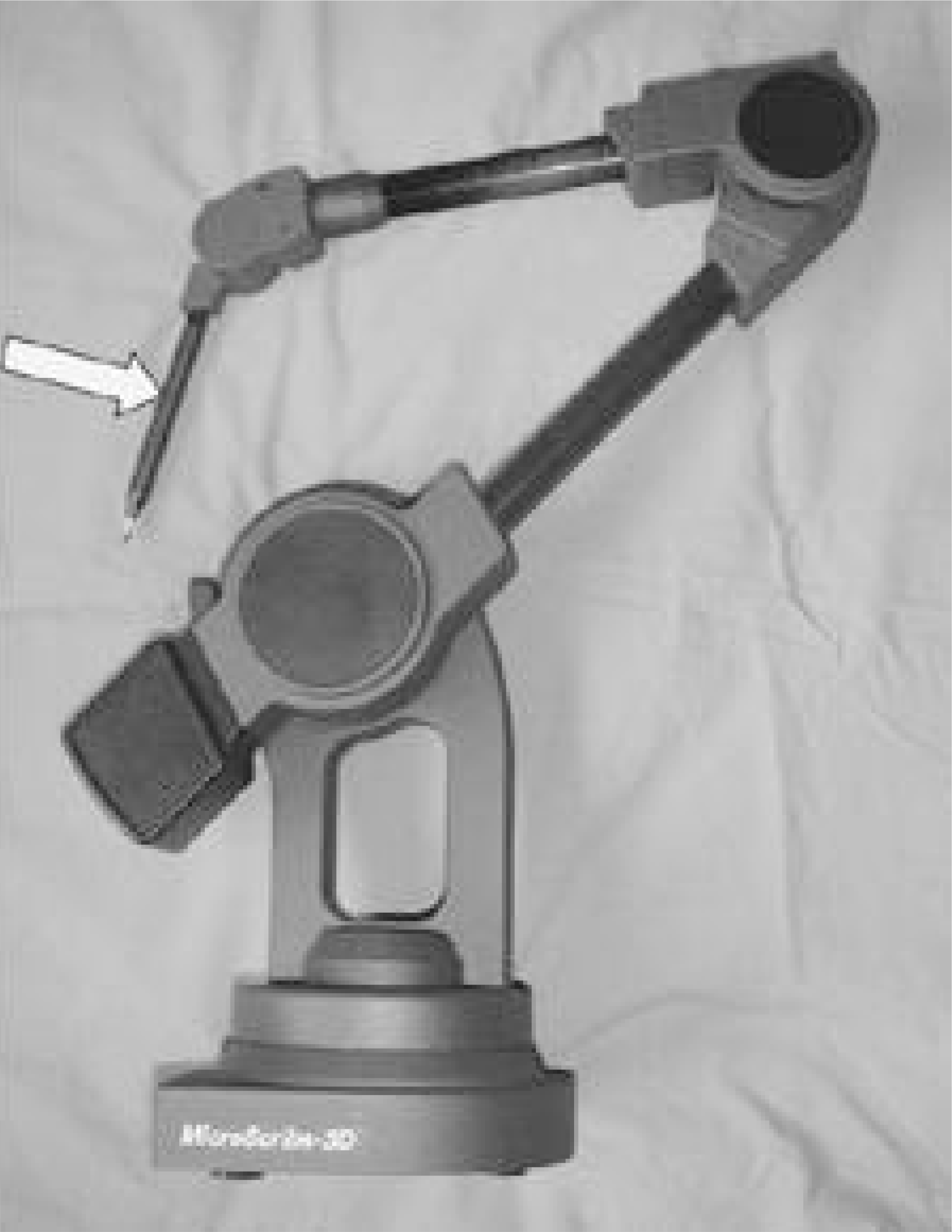 | Fig. 1.A robot-arm type three-dimensional digitizer is shown. The stylus portion is arrowed. |
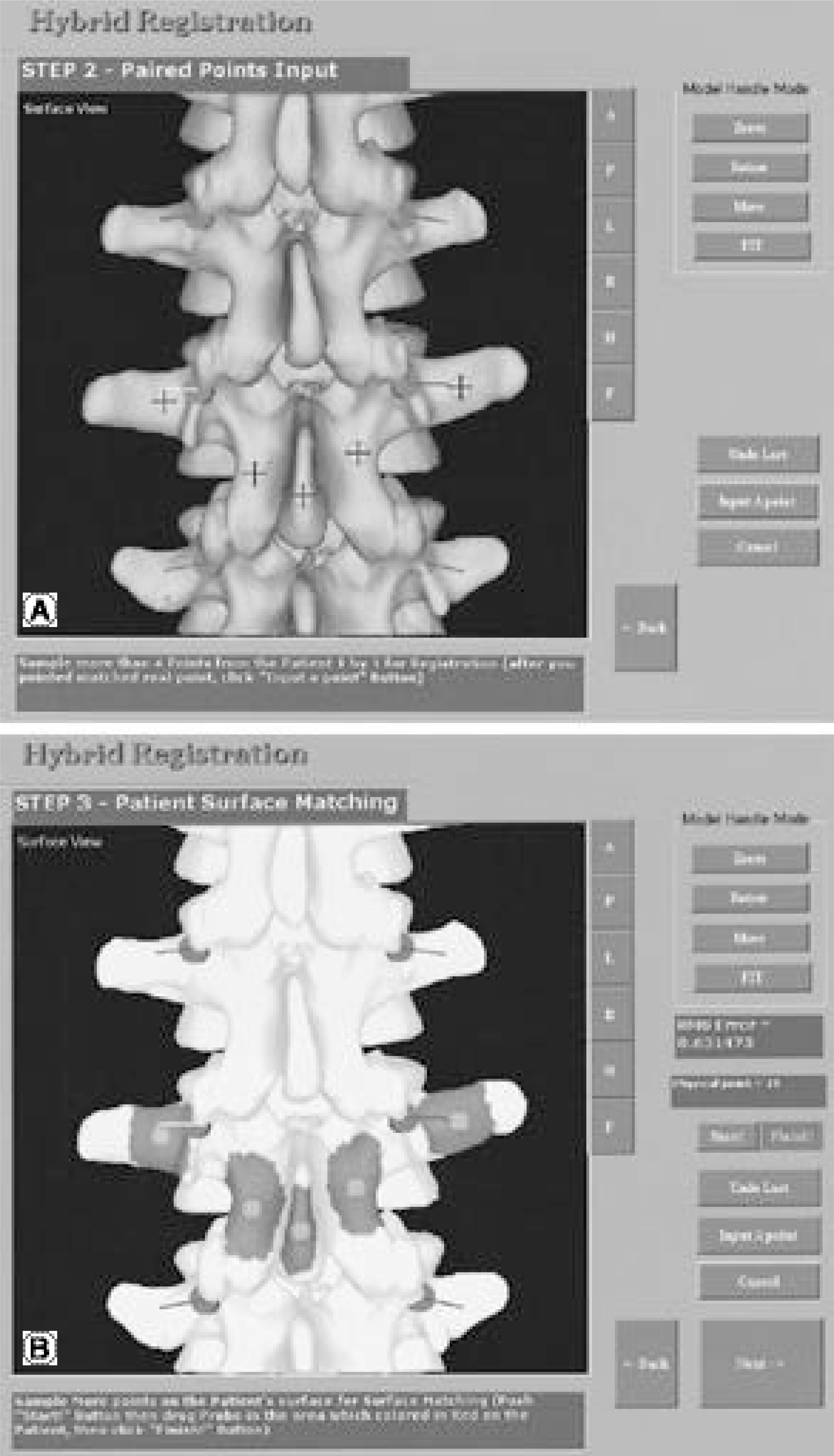 | Fig. 2.The user interface of hybrid registration is shown. Fig. 4. A. Paired point registration is carried out first, which approximately matches 4~6 points on real bones with those on three-dimensional images. Fig. 4. B. Then, surface registration is carried out by additionally inputting 10~12 arbitrary points. |
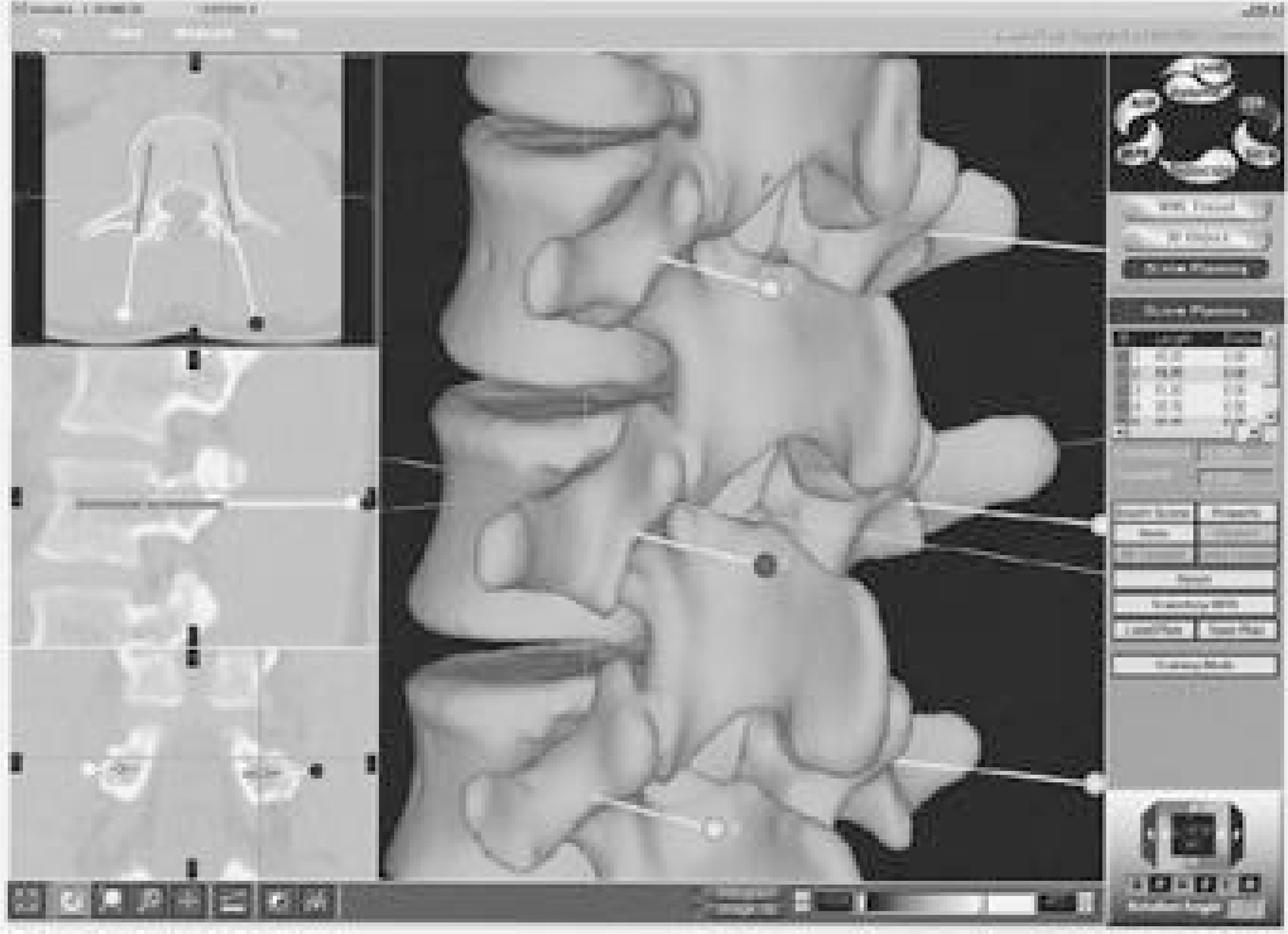 | Fig. 3.Planning software is shown. Optimal entry points and trajectories of screws can be determined pre-operatively using multi-planar and three-dimensional images reconstructed from axial CT scan images. |
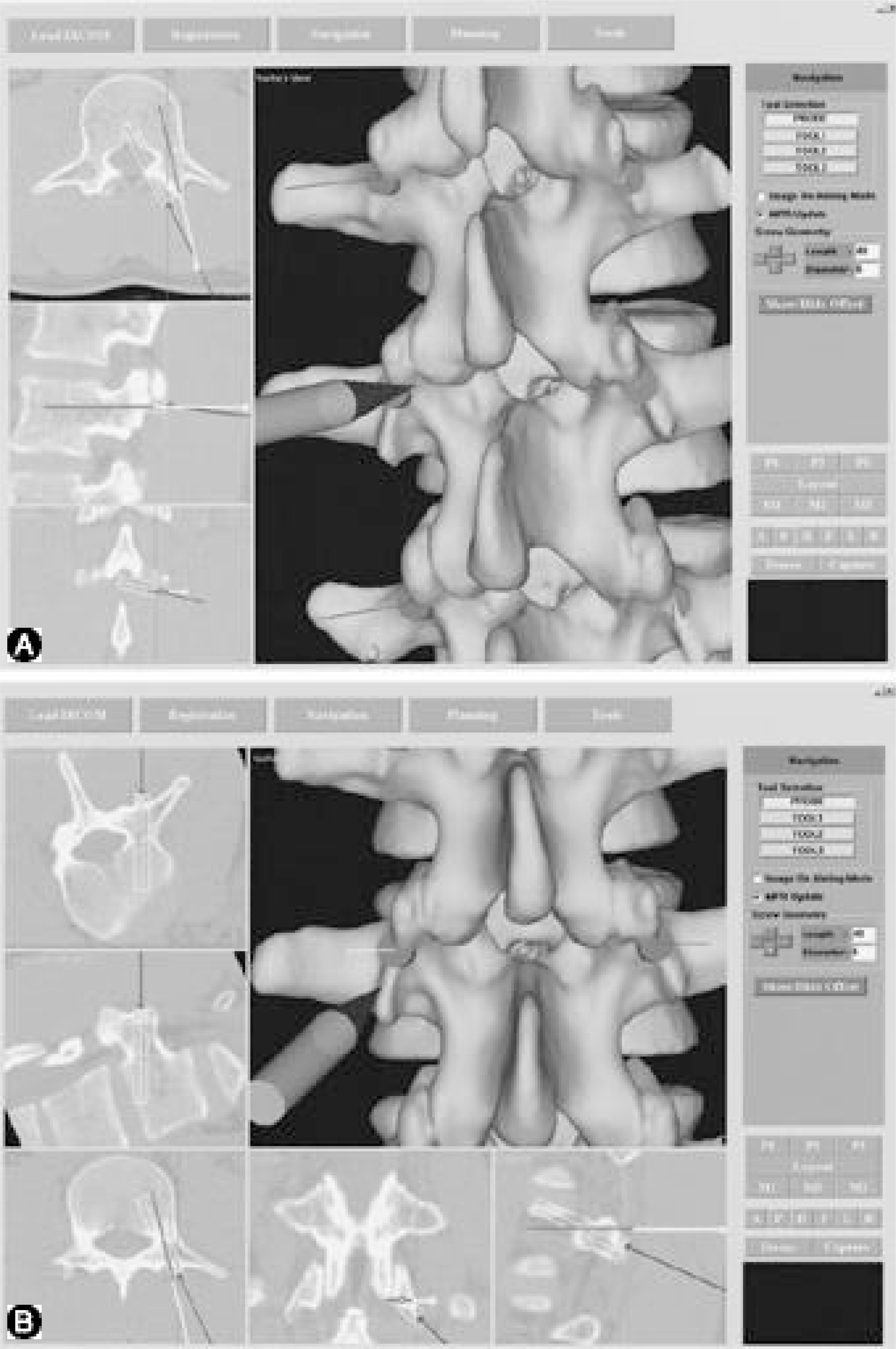 | Fig. 4.The user interface of navigation software is shown. Fig. 4. A. The central axis of the robot arm’s stylus along with the planned trajectory is displayed on multi-planar and three-dimensional images. Fig. 4. B. They can also be displayed on two-dimensional images reconstructed along the axis of the stylus (the two upper left windows). |
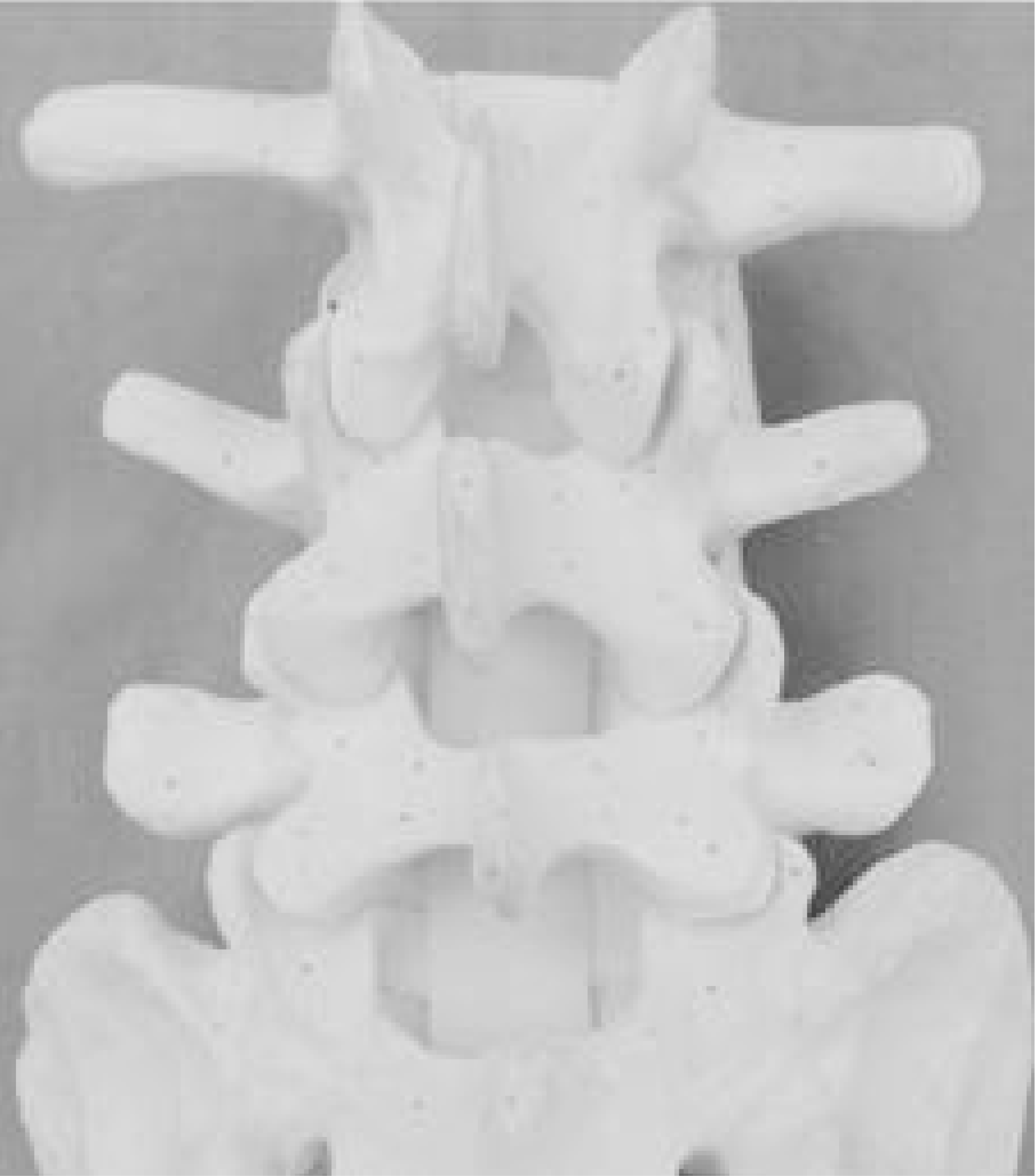 | Fig. 5.A phantom made with a plastic lumbosacral bone model is shown. It was used for the accuracy test. |
Table 1.
Registration error and target localization error of the navigation system.
| Registration method | Error (mm) | |
|---|---|---|
| Registration error | Target localization error | |
| Fiducial registration∗ | 0.78± 0.27 | 1.34± 0.32 |
| Hybrid registration∗∗ | 0.76± 0.24 | 1.28± 0.29 |




 PDF
PDF ePub
ePub Citation
Citation Print
Print


 XML Download
XML Download